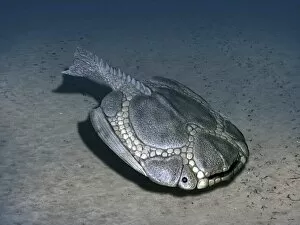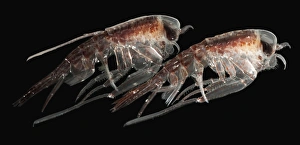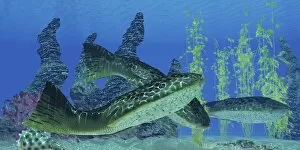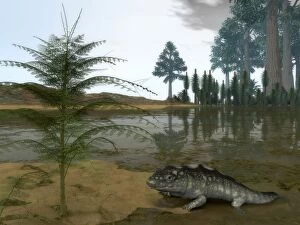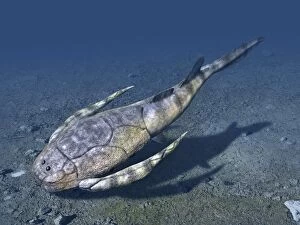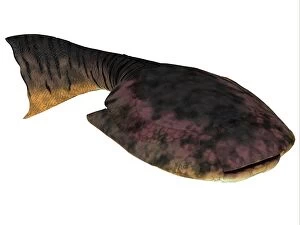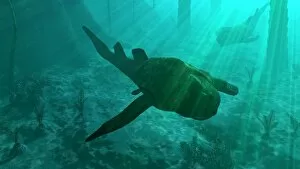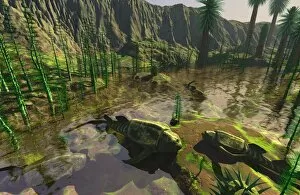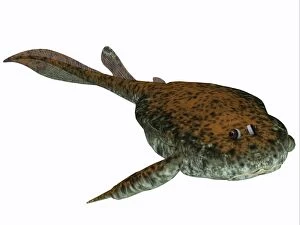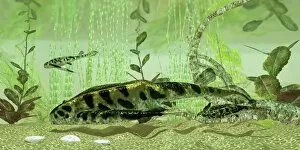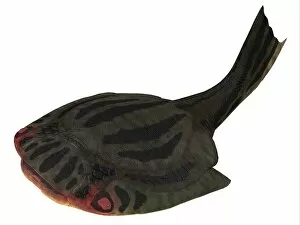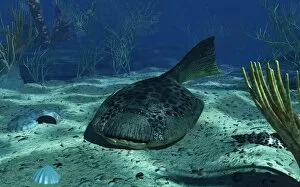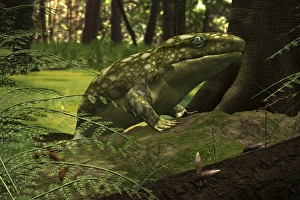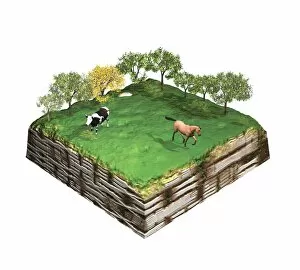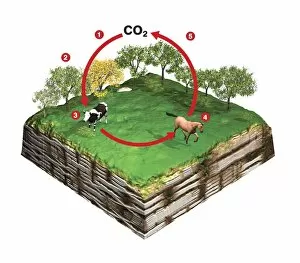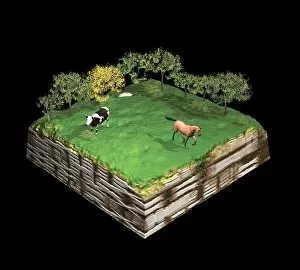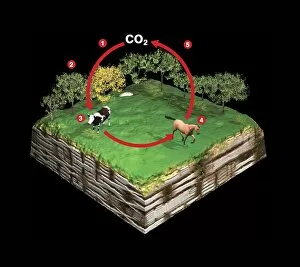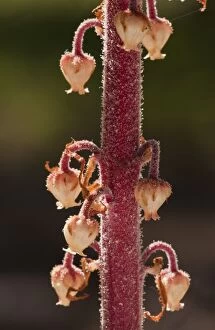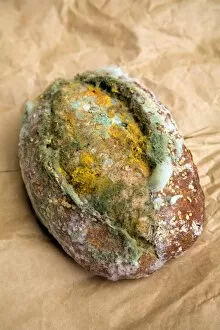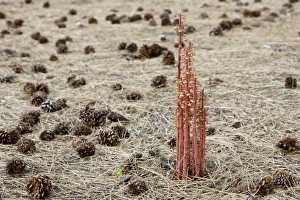Heterotroph Collection
"Heterotrophs: Ancient Predators and Bottom Feeders of the Devonian Period" Drepanaspis, a jawless fish from the Early Devonian of Germany
All Professionally Made to Order for Quick Shipping
"Heterotrophs: Ancient Predators and Bottom Feeders of the Devonian Period" Drepanaspis, a jawless fish from the Early Devonian of Germany, was one of the fascinating heterotrophs that roamed ancient seas. With its primitive features, Drepanaspis gemuendenensis emerged as an extinct species during this period. In the Southern Ocean of Antarctica, a pair of hyperiid amphipods thrived as efficient heterotrophs. These small creatures played a vital role in maintaining ecological balance in their icy habitat. As waters receded on floodplains during Late Devonian times, Ichthyostega made its appearance. This remarkable creature marked the transition from aquatic to terrestrial life and became an iconic symbol for early tetrapods. Bothriolepis, an extinct placoderm from Canada's Late Devonian era, possessed armored plates that allowed it to glide along flooded plains. Several Bothriolepis even ventured onto dry land through shallow tributaries - a testament to their adaptability. Freshwater detritivores were abundant during this time too; Bothriolepis served as one such example. Feeding at the bottom of rivers and lakes, they played crucial roles in nutrient cycling within these ecosystems. Meanwhile, Drepanaspis continued to thrive on the seafloor with its unique adaptations for survival. Its presence in shallow Devonian seas showcases how diverse heterotrophic life was during this period. The story of these ancient heterotrophs reminds us of Earth's rich history and highlights nature's ability to evolve and adapt over millions of years. Studying these organisms provides valuable insights into our planet's past and helps us understand our own place within it.

